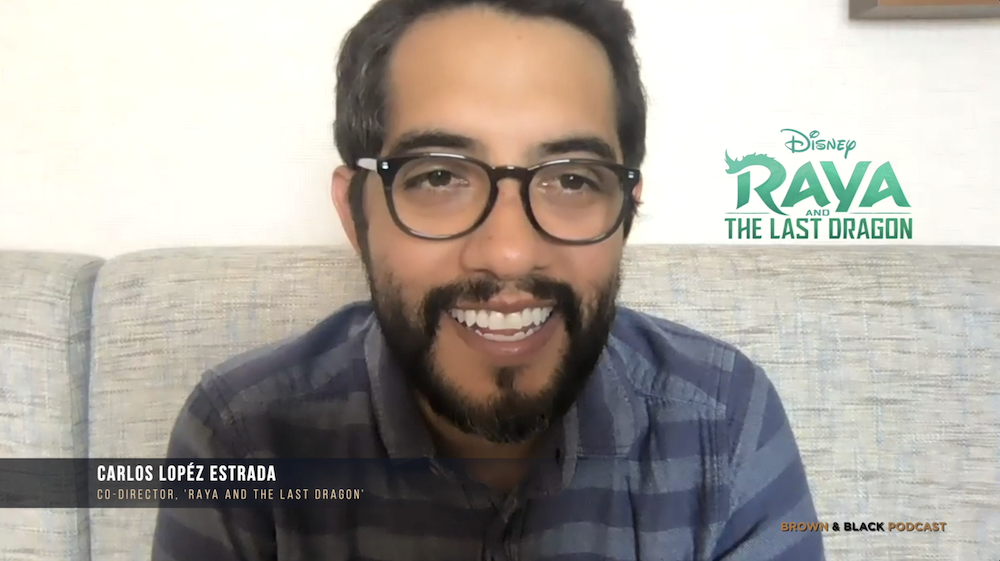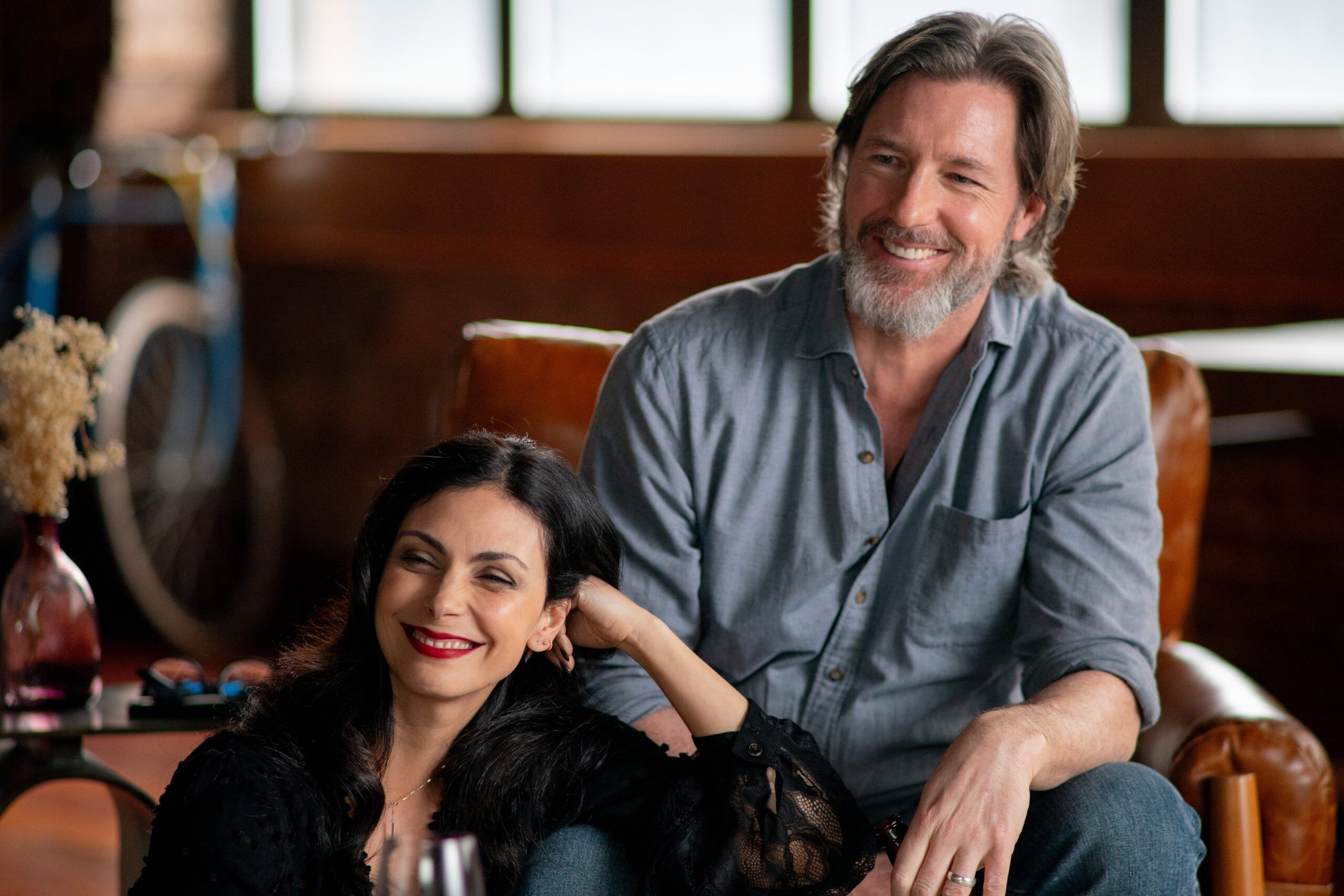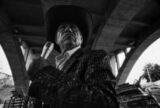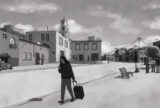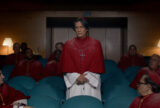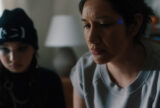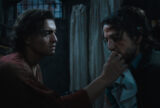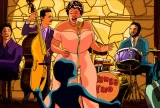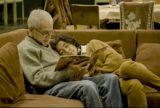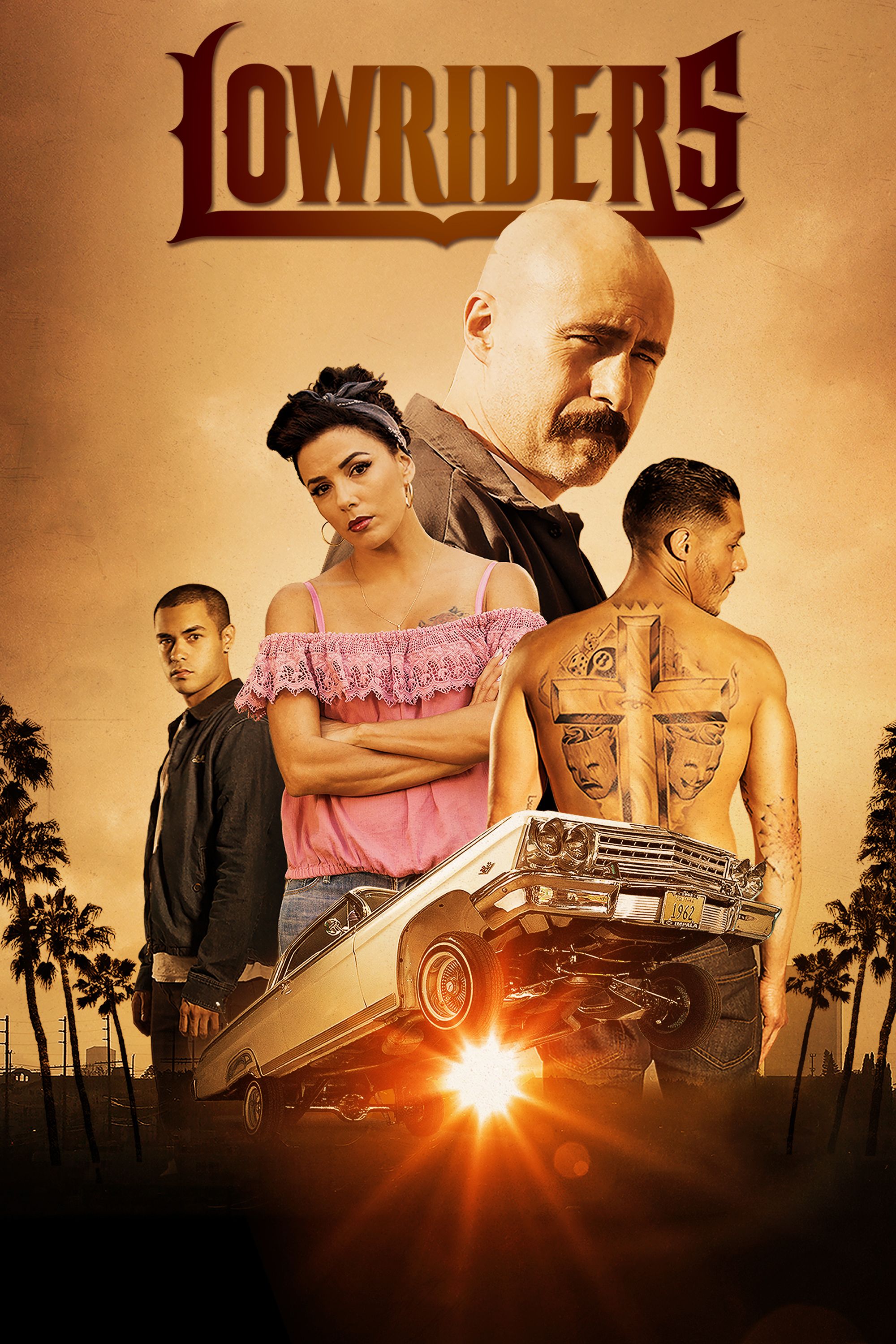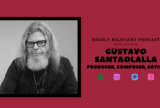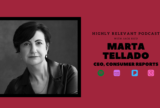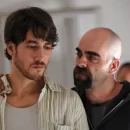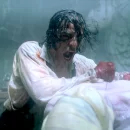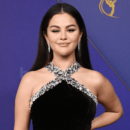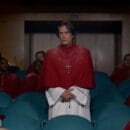03.4.2021 | By Jack Rico |
Disney’s ‘Raya and the Last Dragon‘ will be the first major motion-picture to be released after New York City theaters finally re-open at only 25% capacity this weekend. Though it won’t be an accurate assessment of the potential of all NYC and LA theaters fully re-opening, it will give Hollywood executives a sense for the public’s appetite to see new releases on the big screen, rather than streaming. If ‘Raya’ overdelivers, then we can assume we’re going to have a great summer. But if it underperforms… then we can surmise that people still aren’t comfortable being closed in a room with strangers for two straight hours. At the center of all this attention is Carlos Lopéz Estrada, co-director of the film, who sat with us to discuss a wide array of topics including what he learned as a director and storyteller at Disney, his thoughts on being Latino and directing an Asian film, and why he believes we’re entering a new era of Latino superheroes.
Listen to our podcast interview with Carlos Lopéz Estrada here.
Mike Sargent (MS): Carlos, when we last spoke, I got to know you a little bit is as a storyteller and a filmmaker, you had just done Blindspotting. How do you go from a film like ‘Blindspotting, which is groundbreaking in terms of storytelling, to being a co-director on Raya & The Last Dragon. Please tell me the journey to Raya.
Carlos López Estrada (CLS): It was very unexpected. It was not something that I thought could happen to me at this point in my career. I grew up watching Disney movies and there was always something in the back of my head saying, “wouldn’t it be cool if one day you got to make one of these?”. But for some reason I thought that if that ever were to happen, it would probably be when I was like 50 and had done like plenty of other live-action movies and then cause like dedicate my life to animation. Anyway, I just never. Would I have guessed that my second movie to be released in theaters would be a major motion picture under Walt Disney animation. So how exactly did it happen? There’s a direct tie from Blindspotting. We released it in 2018 at the Sundance film festival, which happened to be right around the time when Jennifer Lee, who’s the current Chief Creative Officer at Walt Disney Animation Studios had just started.
She had just been promoted to her new role and part of the very first initiatives that she introduced to the studio was that she wanted to open up the door for outside directors to join the directing team. And this is unusual because in the almost hundred years of Disney animation history, there’s been one path for directors to get their first project with Disney animation. And you usually either through storyboarding, through animation or through writing. These are artists that have been at Disney for a long, long time, and they essentially just got promoted to direct their first feature. And never have they really opened their doors for directors for outside the company.
There’s a reason and a lot of importance placed into the legacy and what these people bring with them by having been raised in this Disney universe. But Jen obviously saw a blind spot there and said, look, we need to bring in people. (I saw you laughing Mike, there’s no pun there). But she said, “look, we need to bring people from the outside. We need to bring directors of color. We need to bring people that are gonna offer fresh perspectives and move our storytelling forward.” And in a way that is important. She invited myself and another director called Suzi Yoonessi to join the directing department. This was two years ago, and then I was developing my own project [Summertime]. These stories go through lots of evolution and usually change quite often. These groups morph and grow sometimes because these movies are massive. So about a year and a half ago, myself, Don Hall and Qui Nguyen, who’s one of our writers, joined the Raya team. And then from then to now, we’ve been working on that non-stop.
MS: I’m just curious, did the pandemic keep you guys more focused?
CLE: No, these movies take a long, long time from development to completion. It’s somewhere between four and six years. And this particular one was on the longer end of that. So it took almost six years to finish this movie. I joined way, way late in that timeline. But prior to that, there had been a big team of artists, storyboard people our producing team. They had been on this journey for almost four and a half years. Most of the time previous to us joining had been spent in development. So a lot of research trips, a lot of consultants coming in. Creating the story, writing the first few drafts of the screenplay, starting to do a lot of the visual design and creating the world.
But production didn’t really start until maybe January of last year. So that meant that we had just started. We had, I think, two sequences in production, only a few shots animated when we all had to go home. And as you can imagine, it just completely wrecked all the plans for the movie. We had to re-imagine the process. The people in technology had to figure out how to all of a sudden allow us to continue working from over 450 different homes. So they had to send everyone with computers, figure out some kind of system so that people could upload stuff from the heart of the production, which was still in Burbank, but only I think like the group of like 10 people was working there and then everyone else was working from home.
They just had to reinvent how Disney animation makes movies to adapt to this pandemic. And honestly, we don’t think that it’s suffered too much. I think the, the release date of the movie changed by three months, which is nothing. And honestly, everyone was able to work from their individual homes, which was unprecedented.
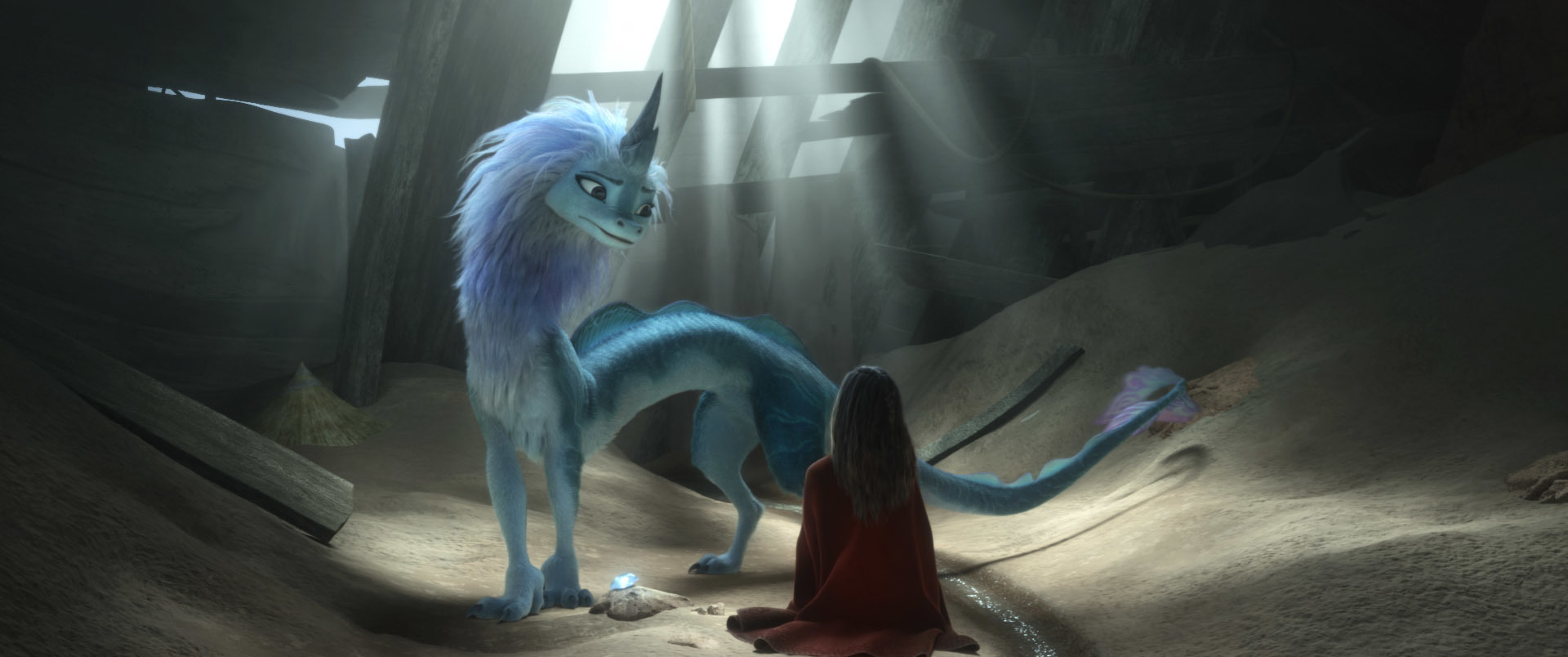
Raya and the Last Dragon
Jack Rico (JR): Raya and the Last Dragon is the first movie coming out in theaters when New York City has allowed theaters to reopen at 25% capacity. The importance and the significance of what this film represents for Disney and Hollywood at this very minute and how you are right at the center of it.
CLE: You asked a very big question with a lot of components. I think that these times are unprecedented and no one really knows what’s going to happen. When this was first starting, I remember we were reaching out to executives at Disney asking to please give us some insight, what can we expect? Do you know something that we don’t know? And the answer that came often was, “we know as much as you do, we’re learning every day. I can’t give you any kind of prediction for what’s going to happen in the next day, week, month, it’s impossible to predict. So really we’re just kind of improvising together. We have a little bit more certainty now that there’s a vaccine. It’s different than last summer when we were first starting to figure out what was going to happen here. The movie feels really timely. It has present themes that to me feel very necessary, and we’re very excited that people are going to get a chance to experience the movie regardless of their situation.
If they’re in a location where theaters are open and they feel comfortable going to a theater, in a safe manner, then they’ll be able to have that experience, which is obviously a very unique experience to see these kinds of movies on a big screen with a great sound system. But if that is not a possibility, then rather than just not seeing the movie at all, they, we have the advantage of having this platform where they’re able to see it at home. They will see it with their family. They’re able to see it multiple times and share with other people. So we like to think that it’s a best case scenario for now. And theaters keep opening. I think I, I just read that some counties in California are also going into reopening stages and many of those include very limited capacity movie theaters, but apparently in San Francisco and other counties they’re going to be able to start opening theaters. So hopefully enough people get a chance to see that experience because it’s very special.
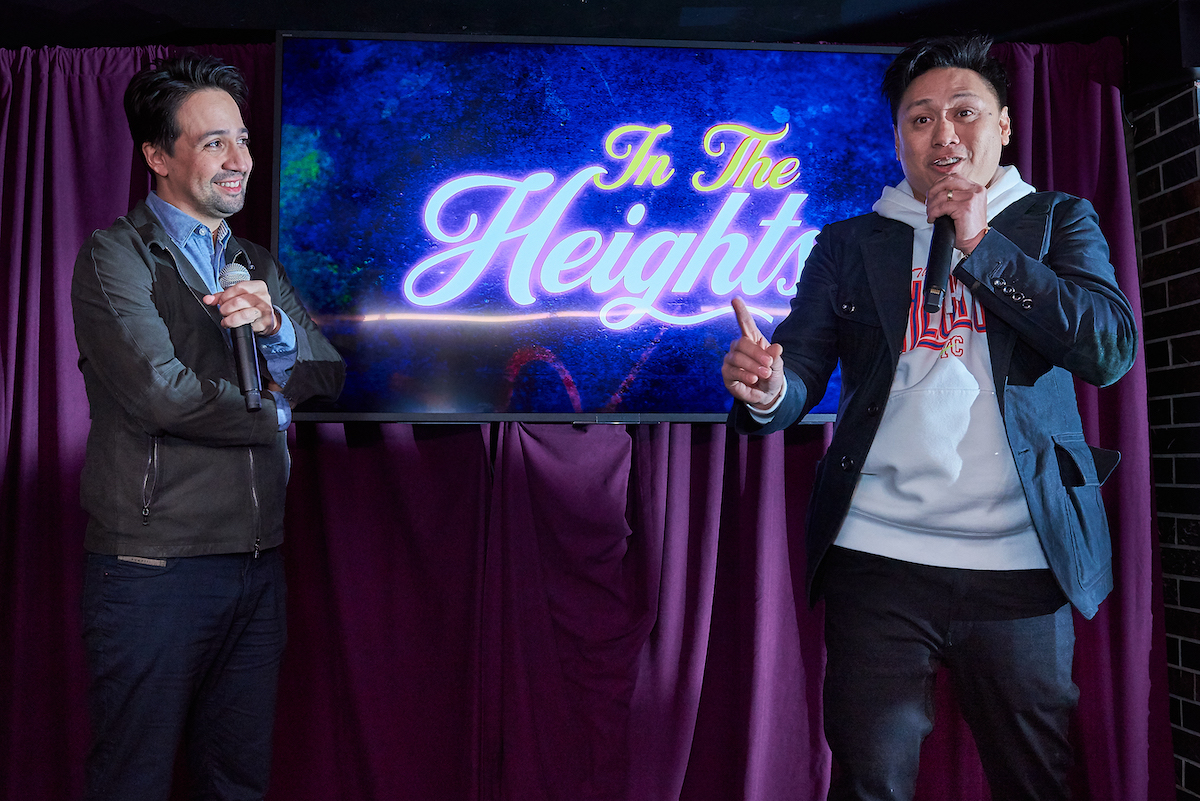
Lin-Manuel Miranda and Jon Chu – ‘In The Heights’
JR: One of the criticisms we’ve been talking about on this show has been how ‘In the Heights’ hired an Asian director (Jon Chu) to do a Latino movie. In a moment where we are about image representation, we have to give our own people the chance to do our own movies, to tell our own stories. ‘Raya and the Last Dragon’ is the reverse example of that – a Latino directing an Asian movie. Should directors only direct movies of their own race?
CLE: I think you ask a lot of good questions. I think that absolutes are usually problematic. Throwing down the gauntlet and saying, “no one who isn’t Latino should never ever be able to tell a Latino story or no one who doesn’t belong to the racial narrative should be able to tell that story”. I wouldn’t support that philosophy because I do feel that film allows you to do that, it allows you to live in bodies and experience stories that are foreign to your own. And that’s the way that we generate empathy. And that’s the way we grow.
I’m very cognizant of the fact that there is a problem of representation in film. Until that problem doesn’t exist, the only way to solve it is by really pushing for people who have some direct, profound connection to the material to be the ones telling the story. So I don’t necessarily think that any one perspective is wrong.
I will say that I had the same question when I start working on Blindspotting. I remember Daveed and Rafa invited me to direct the movie and I told them, look, I love and respect both of you. I want to make this movie because I know that it’s going to be worth my time, but are you sure that you don’t want a Black filmmaker from Oakland directing this movie? It’s a movie that deals with racism, a movie that deals with questions of identity and it does so in such a specific way. That was just my first question. Wouldn’t you want someone who understands Oakland from the inside? Wouldn’t you want someone who’s Black and can speak to the Black experience in a way that for obvious reasons I can’t. And they, without hesitating, said no, we believe in you as a filmmaker. We think that you’re going to be able to understand our hometown and what we love about it. We’re going to be here for you as resources for you to understand as much as you need to. We want you to tell our story and that was very empowering. The trust that they gave me and then the fact that they believed in me… The fact that they thought that I was the right person really just gave me all the confidence that I needed to do it.
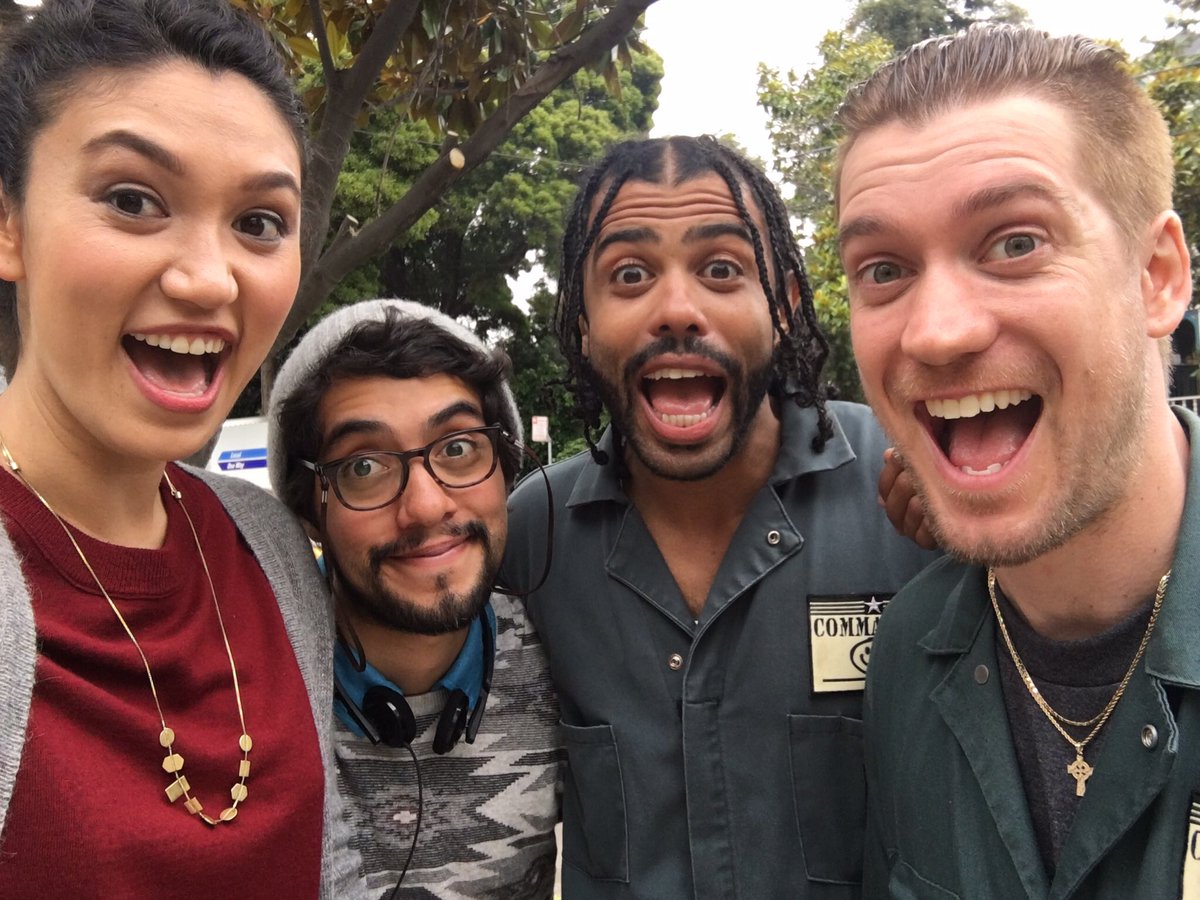
Carlos Lopéz Estrada, Blindspotting
And I feel similarly here. The closest that we can get is by having people who are really open and humble to go into these experiences knowing that they’re going to need to rely on people who do have those direct connections surrounding themselves with at least one, but ideally a group of people who can help you build these stories and characters from the inside that you’re not just approaching on a surface level and that you’re engaging with the community, that you’re treating it with a lot of responsibility and that you are aware that you’re an outsider being welcomed into this culture. And just like when you’re a guest at someone’s home you come in with a set of expectations that you say, “I’m going to play by your rules. I’m going to observe and document what I see rather than to try to give you a directive or give you my point of view.” This is about me amplifying your point of view as opposed to me like coming in and giving you my point of view. My point of view is just to capture yours right now.
So I think that as long as people who are telling stories that are not their own culturally, socially, racially, I feel like as long as there is that dialogue and as long as there’s that kind of relationship, that kind of dynamic, and people on both sides are welcoming that experience, I think that there’s these kinds of stories should be celebrated and people being able to immerse themselves into someone else’s culture is really a beautiful thing. I’ve grown a lot from it and I would love for someone who is not Mexican to tell a story that takes place in Mexico and treat it with so much responsibility as I would tell someone else’s cultural story. And if someone really went to Mexico and got to meet the people and got to experience and got to do the research and like really saw it from the inside, I think that it’s a beautiful thing, but there’s a lot of steps that I think need to happen in order for this to be a productive process and not one of appropriation.
MS: A large part of our podcast is about unity and Blindspotting is about unity, it’s a Latino guy directing a white guy and a black guy. You are a co-director on ‘Raya’ so it’s all about working, cooperating and everybody brings something. What do you feel you brought to this project and what attracted you to it?
CLE: The culture at Disney animation and the way they construct their stories is very different from anything I’ve ever done or heard before. And it’s truly collaborative and it’s truly a creative community coming together to build a story. I think on the surface it may sound as if it’s movie-making by committee or corporate filmmaking. And yes, it is a corporation, but it’s a lot more profound than that. And the way that we collaborate with artists that are working on this film with the other director and the co-directors and we have two writers, it’s quite a number of people that are helping construct this. And the only way that these collaborations are successful, because they could very easily go south, and they could very easily turn contentious. As soon as egos get in the way, it could just become a mess, but here you really have to learn to co-exist with other creative minds, you really have to learn to take ideas and to not say no, to learn how to collaborate, to learn how to not shut other people down, to build up on each other, to communicate effectively. It’s really complicated and interpersonal skills that need to come at play for these collaborations to work properly. And that was very exciting to me.
I had just worked on a movie. It hasn’t been released. It comes out in theaters this summer. It’s called Summertime and I had just done it before joining Disney Animation. And this was a narrative film project we constructed with a group, a small community of spoken word artists ages 17 to 25, there was like 20 or so of them. And then we all worked on the story together and it was one of the most rewarding experiences, creative experiences of my life. Rather than coming in and dictating what you want your vision to be, and then making everyone around you adhere to it and help you accomplish that, this is the opposite. This is coming in with a vulnerability and an openness of saying, “look, I believe that what this group has to offer is more than I do as an individual. So let’s work together and let’s see how our brains can support each other and doing something that we believe is worth it.”
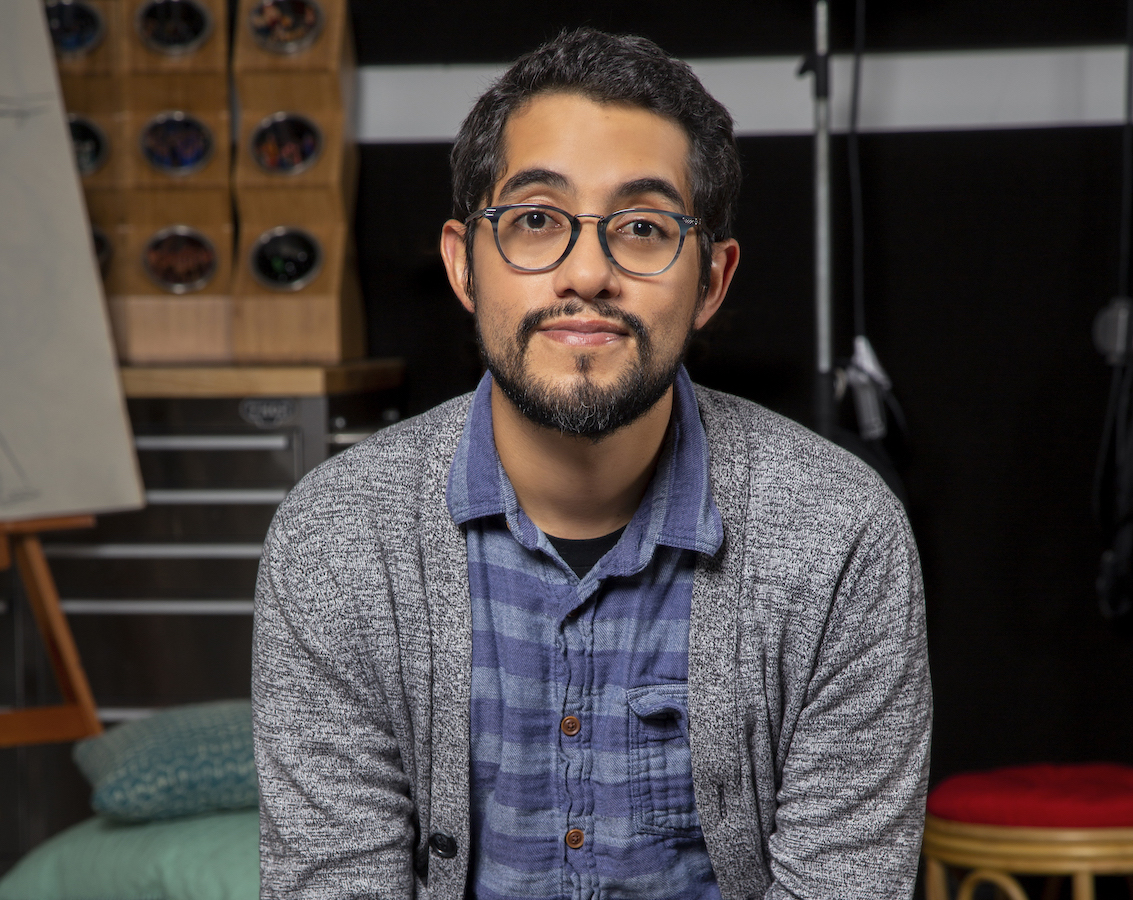
Carlos Lopez Estrada. Photo by Alex Kang/Disney
I had such a beautiful experience doing that and this really just felt very similar to that experience, but on a whole other level, like all of a sudden you’re collaborating with 450 different artists, we had like 10 story artists, which are working with us every day. We had like 15 visual development artists and then you start bringing in the animators. We had a hundred animators at some point, so it really becomes almost like a social experiment of how you can have all of this creative input, and all these people, how can you inspire them to work towards a similar goal, knowing that things are going to change, knowing that ideas are going to evolve, and knowing that egos… this is not about egos and this not about someone proving that they have a strong vision. This is about someone proving that they can be open and willing to work with others. That was really exciting to me.
And then ironically enough, the theme of the movie is about unity through trust and how people with different worldviews, different opposing ideologies, how they can co-exist, work together, trust each other again. I feel like for both of those reasons, this project just felt so exciting. And I’ve learned so much in the last two years, I’ve grown as an artist. I’ve grown as a filmmaker, as a storyteller and had you asked me three years ago is Disney that place for you to evolve as a filmmaker, I wouldn’t have been able to give you that answer, but I’m just so happy to be here with this group of people. It’s been a really great ride.
JR: When people first get into the process of filmmaking, the first thing they pick up is ‘Creativity, Inc.’ to understand the true nature of storytelling. Disney is considered the holy grail of storytelling. What did you learn about storytelling in this process?
CLE: (Long pause). I’ve directed a lot of projects. I got to work with Daveed and Rafa, but I’ve never constructed a movie from nothing. And I’ve never had to create characters and worlds and scenarios and moments that are going to affect people across the world of different ages, because really the reach that the Disney movie has is unlike anything. Just the fact that there’s people who are young enough to not be able to speak, read, write, and are watching these movies and there’s people my age, and then there’s also my mom and my grandma, they are excited about these movies. I think that sometimes it’s easy to get cynical about it, but it’s a profound reach that these movies have.
Learning to tell stories with such simplicity and with such clarity that you’re able to reach all of those audiences, that you’re able to communicate something that is as basic as something that the youngest person in your family can grasp, but also something as complex and layered that you two would be engaged by and attracted by it, hopefully be thought-provoking in some way, it’s a real art form. And not to say that I have the formula and not to say that I know how to do it, but I think that the last year and a half in constructing the story has really made me have to exercise some muscles in my brain that I don’t think anything else would have.
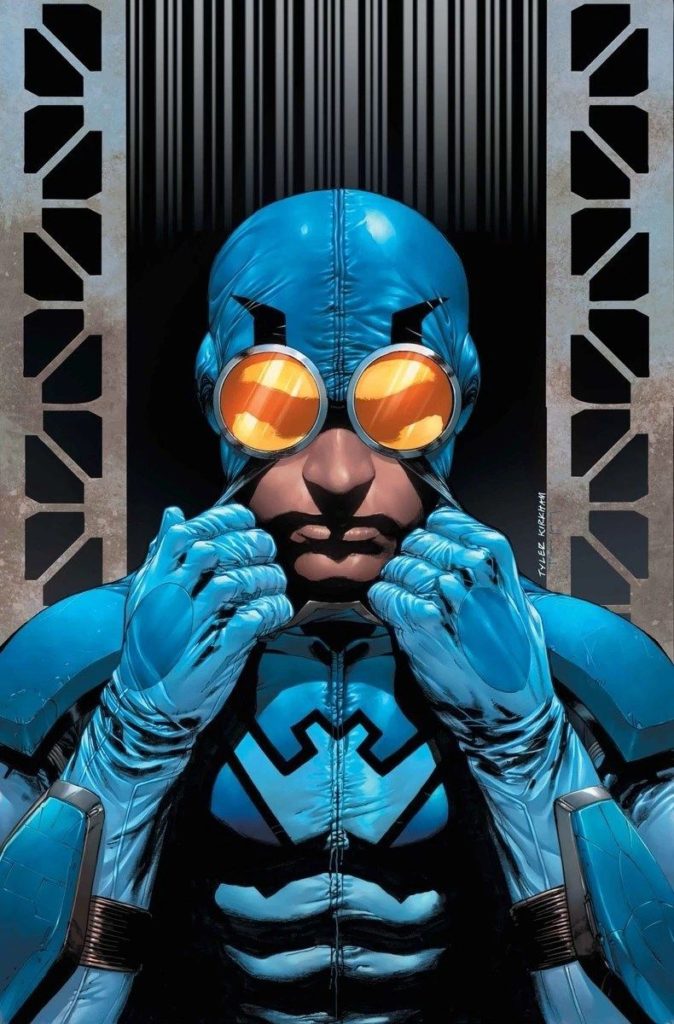
Blue Beetle, Jaime Reyes
JR: I wanted to ask you about from Warner Bros. ‘Blue Beetle,’ the first Latino superhero is finally coming to the big screen. What do you think the impact will be for us Latinos today to see a Latino superhero, from a major studio, coming to a screen near you.
CLE: I mean, I’m just happy that we’re a part of this era now that is putting so much effort on accurate presentation and is putting so much effort in making sure that the stories that we tell come from a place of truth and a place of power. I’m excited to see it. I’m excited to see all this wave of new films that come from from this era.

